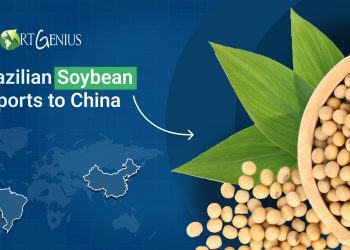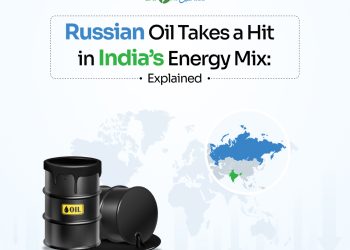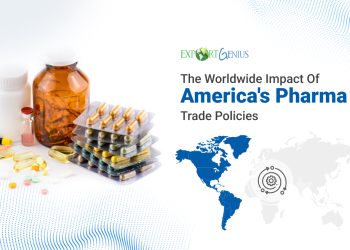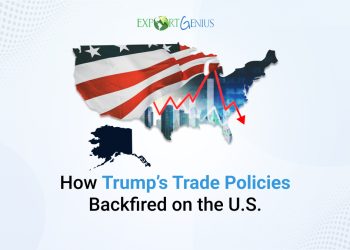India and the United Kingdom signed a historic Comprehensive Economic and Trade Agreement (CETA). What does this deal mean for India-UK bilateral trade relations? How will it impact global trade? Which commodities will get cheaper or expensive? Export Genius explains everything related to the India-U.K. trade deal with India-U.K. bilateral trade data.
India-U.K. Bilateral Trade
How much does India trade with the United Kingdom? This article breaks down the current state of India–UK bilateral trade, featuring key data, economic developments, and the effects of their newly signed agreement Comprehensive Economic and Trade Agreement (CETA / FTA):
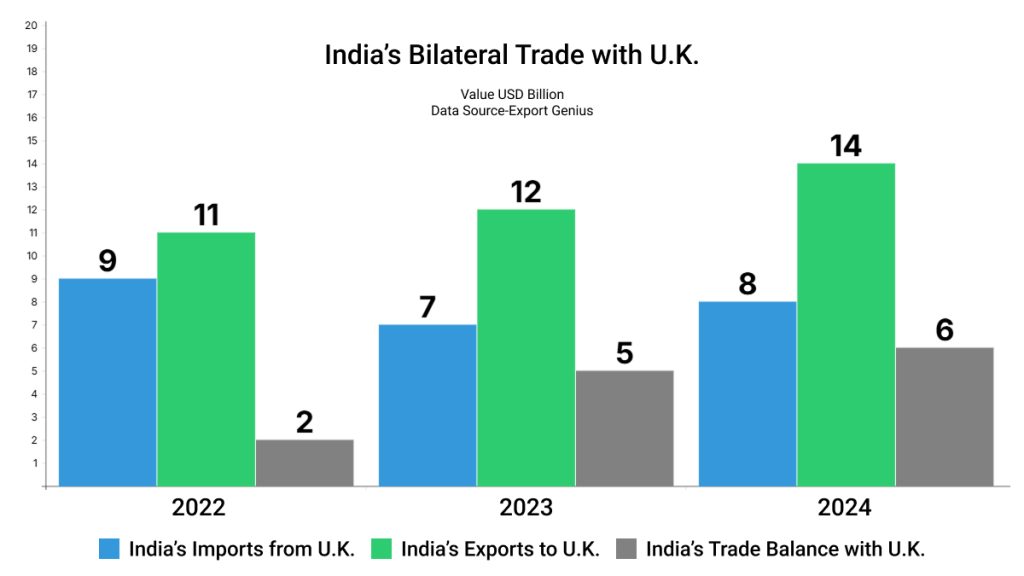
| Year | India’s Imports from U.K. | India’s Exports to U.K. | India’s Trade Balance with U.K. |
| 2022 | 9 | 11 | 2 |
| 2023 | 7 | 12 | 5 |
| 2024 | 8 | 14 | 6 |
*****Value USD Billion
Which Indian commodities will benefit from the deal?
Under the deal, the United Kingdom has removed tariffs on 99% of its product line. India’s major exports to the UK are fresh fruits (grapes and mangoes), seafood, automobiles, carpets, footwear, and textiles. These commodities will now enter the U.K. duty-free.
India exports to the U.K. – aircraft components, diamonds, pharmaceuticals, and petroleum – already enjoy zero duty access. India has agreed to either eliminate or reduce duties on 90% of its tariff lines, which comprise about 92% of what the U.K. exports to us. Alcohol from the U.K., especially whiskey, is set to become cheaper in India, as are British cars and engineering products.
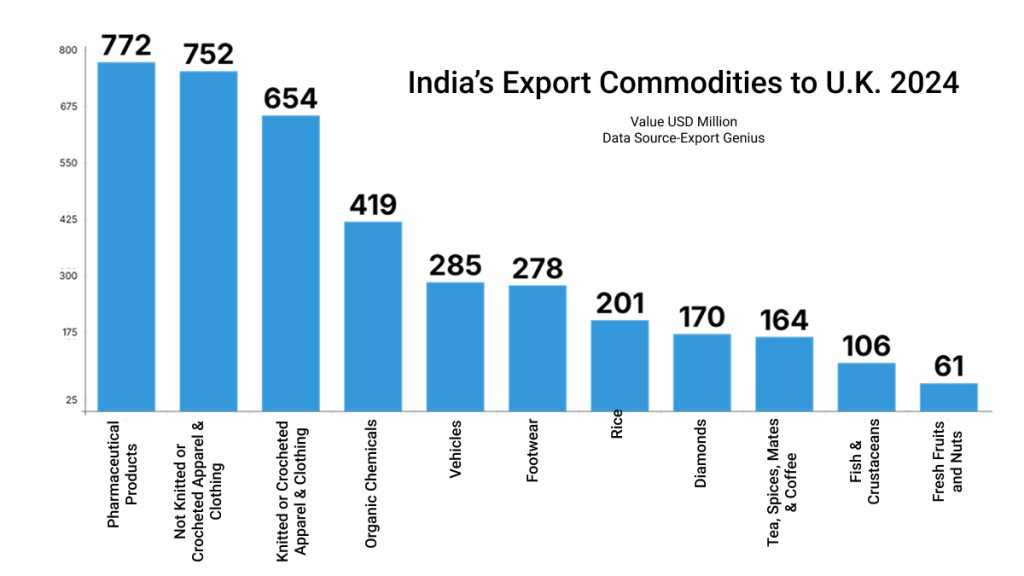
| Commodity | Value USD Million |
| Pharmaceutical Products | 772 |
| Not Knitted or Crocheted Apparel and Clothing | 752 |
| Knitted or Crocheted Apparel and Clothing | 654 |
| Organic Chemicals | 419 |
| Vehicles | 285 |
| Footwear | 278 |
| Rice | 201 |
| Diamonds | 170 |
| Tea, Spices, Mates and Coffee | 164 |
| Fish and Crustaceans | 106 |
| Fresh Fruits and Nuts | 61 |
India’s exporters of the textile and woollen industry have welcomed the signing of the India-UK Free Trade Agreement. According to Wool and Woollens Export Promotion Council (WWEPC), the free trade agreement will serve as a boost for the Indian woollen industry. The agreement will benefit MSMEs and traditional clusters in Ludhiana, Amritsar, Panipat, and Kashmir by boosting export competitiveness, attracting investment, and generating employment.
What gets cheaper for Indian Consumers?
One of the key takeaways of the FTA is the drastic reduction in tariffs on British goods entering India, with average import duties dropping from 15% to just 3%. This opens the doors for premium British products to become far more affordable across several categories:
| Commodity | Tariff |
| Scotch Whisky | Slashed from 150% to 75% |
| Luxury Cars | Slashed from 100% to 10% |
| F&B Products – soft drinks, chocolates, biscuits, and other British food and beverage items | Will now get cheaper |
| Cosmetics & Personal Care Products | Reduced tariffs |
| Medical Devices | Reduced tariffs |
| Textiles and Apparel | Reduced to zero tariffs |
| Jewellery of Gold and Diamond | Tariff removed |
| Agricultural and Processed Foods – basmati rice, spices, shrimp, tea, and packaged foods | Tariff reduced |
| Industrial Goods – auto components, sports goods, chemicals, and machinery | Tariff reduced |
Bottom Line
The signing of the India–UK Comprehensive Economic and Trade Agreement marks a pivotal shift in global trade strategy. It will unlock unprecedented opportunities for exporters, importers, and investors across both nations. India-U.K. bilateral trade has been projected to $100 billion by 2030. Tariff reductions opening key sectors—from textiles and automobiles to digital services and whisky—the economic impact is set to be profound and long-lasting.
Partner with Export Genius to stay ahead of the curve. Our custom trade data solutions and market insights help you identify trends, monitor competitors, analyze HS codes, and make informed export-import strategies—globally and bilaterally.
Explore India–UK trade data today and unlock new business opportunities.






